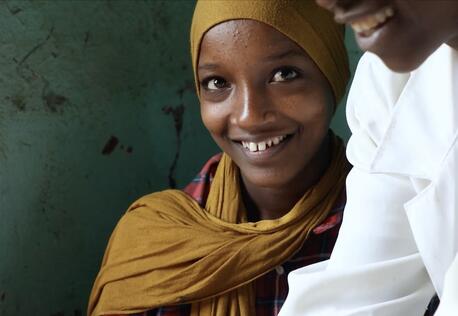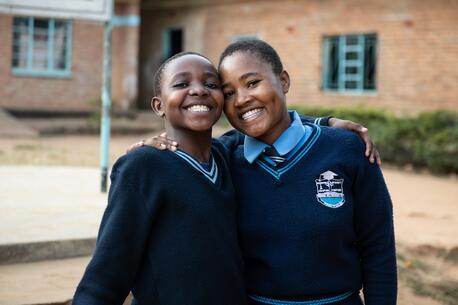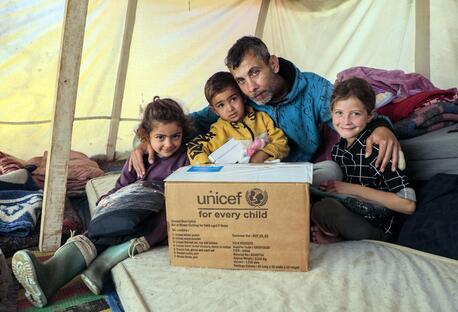
We Can End Child Trafficking and Forced Labor
By shopping ethically and pressing for changes to local legislation, we can curb the demand for child trafficking.
Child trafficking — the buying and selling of children for the purpose of exploitation — is one of the most profitable industries in the world. Annual revenues for child trafficking and forced labor total an estimated $39 billion globally. To place that number in perspective, the trafficking of children generates more revenue every year than the NFL, NBA, NHL and MLB combined. This is a shockingly high figure, and it begs the question: Where does all of this money come from?
As a business, child trafficking operates on the same principles as the rest of the market: supply and demand. If demand remains at a certain level or increases, then there will be attempts to deliver a corresponding supply. There is currently an incredibly high demand for exploited children, both for sex and labor. Consumers play a large part in maintaining that demand, which means we also have the power to curb it.
Ten-year-old Halima's parents kept her home to work in the fields farming cocoa in Côte d'Ivoire until a UNICEF child protection program helped her family improve their harvest without relying on child labor. Now she's in school, and planning to be a teacher when she grows up. "She will be the one to teach the children of tomorrow," her father says proudly.
Labor exploitation accounts for approximately two-thirds of the $39 billion child trafficking industry, and consumers contribute to the demand for labor exploitation with our daily purchases. The cotton in our clothes, sheets and towels, for example, is considered a worst offender when it comes to child trafficking.
Cotton-based clothing production essentially consists of 5 steps: planting, harvesting, ginning, spinning, and trimming – and trafficking is present at every step along the way. In some places, it is harvested by children as young as 5 working 16-hour days.
Consumers play a large part in creating the demand for child trafficking: That means we have the power to stop it
Our increasingly globalized economy makes it difficult to trace many of our consumer products to their source, but it also makes it all the more important to do so. When we demand cheap goods, companies look for ways to reduce retail prices, and have historically prioritized their profit margins over ethical sourcing. As such, they may source from farmers and manufacturers that engage in labor trafficking.

Daby, 14, operates a chainsaw at the Belema gold field in Mali, June 2017. © UNICEF/UN0143372/Luthi
By calling on companies to exhibit a transparent, ethical supply chain, we can create a demand for ethically sourced products
Our favorite brands may not intentionally engage in child trafficking, but there is little economic incentive for them to actively avoid it. That is where we come in. By shifting our consumption patterns and calling on companies to exhibit a transparent, ethical supply chain, we can effectively create a demand for ethically sourced products. The more we shift our consumption, and use our spending power for good, the less we contribute to that $39 billion global child trafficking trade.
As long as the demand for cheap goods remains high, traffickers will prey upon vulnerable children to make a profit. It’s our job to expand the demand for ethically sourced products.
Help stop human trafficking by shopping ethically
One way to support ethically sourced products is by shopping UNICEF Market, UNICEF USA's online emporium offering unusual, well-designed and beautifully crafted items. UNICEF Market artisans are fairly compensated for their work so you can shop with confidence, knowing that UNICEF Market adheres to principals designed to improve conditions for vulnerable producers and their families.
How can I get involved?
- Get active to end trafficking this January using our End Trafficking Month Toolkit
- Send an email to your local elected officials urging them to keep trafficking and its victims top of mind
- Shop UNICEF Market for ethically sourced products, all of which generate proceeds that support UNICEF programs, including those aimed at preventing forced labor and other forms of exploitation that threaten children
- Join UNICEF UNITE
- Become a monthly donor
- Spread the word by sharing this article or posting on your own social media accounts using the UNICEF USA Social Press Kit
Eitan Peled is a Global Citizen Fellow with the UNICEF USA End Trafficking Project.
Top photo: Reshmi, 12, worked in a cotton field in Karnatarka, India until a program implemented in conjunction with UNICEF helped her and other child laborers enroll in school. © UNICEF/UNI88064/Crouch
HOW TO HELP
There are many ways to make a difference
War, famine, poverty, natural disasters — threats to the world's children keep coming. But UNICEF won't stop working to keep children healthy and safe.
UNICEF works in over 190 countries and territories — more places than any other children's organization. UNICEF has the world's largest humanitarian warehouse and, when disaster strikes, can get supplies almost anywhere within 72 hours. Constantly innovating, always advocating for a better world for children, UNICEF works to ensure that every child can grow up healthy, educated, protected and respected.
Would you like to help give all children the opportunity to reach their full potential? There are many ways to get involved.





